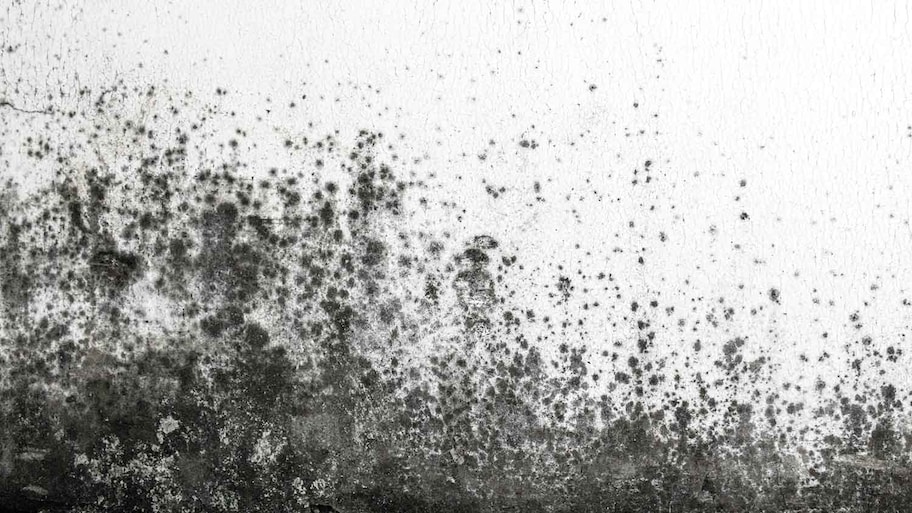Is Black Mold Toxic? If So, How Can You Tell?
Keep your home mold-free


Highlights
Black mold thrives in areas of high humidity.
Mycotoxins in black mold make it toxic.
Infestations can cause respiratory issues and allergic reactions.
The presence of mold in living spaces can be a cause for concern, and one particularly worrisome type is black mold. But is black mold toxic, and if so, what are the potential health risks associated with it? Read on to dive into the characteristics of black mold, its potential health hazards, and how to identify its presence in your home. When you have a better understanding of the risks posed by black mold, you can take the necessary steps to maintain a healthy living environment.
Understanding Black Mold
Stachybotrys chartarum, commonly referred to as black mold, is notorious for its slimy, dark appearance and ability to produce mycotoxins, harmful compounds that can pose a risk to human health. It flourishes in damp environments with high levels of humidity, and is frequently found in water-damaged or moist areas of houses, such as basements, bathrooms, and around leaky pipes.
Exposure to black mold can result in a range of health issues, including respiratory problems, allergies, skin rashes, and more severe illnesses. Therefore, it is essential to recognize its presence and take necessary precautions to prevent its growth and promptly address any infestations.
Health Concerns Associated with Black Mold
The toxic nature of black mold is attributed to the mycotoxins it produces. These harmful substances can severely affect human health through ingestion, inhalation, or skin contact. Exposure to mycotoxins released by black mold can pose serious health risks.
Typical symptoms resulting from exposure include respiratory problems such as coughing, wheezing, throat irritation, allergies, skin rashes, and sinus congestion. In severe cases, individuals may suffer from headaches, fatigue, flu-like symptoms, and even neurological issues.
The risk is even higher for vulnerable groups such as infants, the elderly, and those with weakened immune systems, highlighting the significance of identifying and preventing the growth of black mold indoors. Early detection and prevention can make a significant difference in reducing health risks.
Toxicity of Black Mold
The harmfulness of black mold infestations varies, as different individuals may react differently to the same type of mold. The extent of health risks depends on factors such as the strain of black mold, the amount of mycotoxins generated, and individual sensitivity to the toxins. While some may experience severe health effects, others may not be as affected. Therefore, caution is necessary when dealing with black mold infestations, regardless of the strain, and appropriate safety measures should be taken to minimize potential risks.
Identifying Black Mold

Black mold is distinguishable from other types of mold due to its dark, slimy, or fuzzy appearance with a greenish-black hue. The musty and earthy odors that often accompany black mold infestations are another way to identify it. The unpleasant smell can serve as an initial indicator of its presence in a home, even if the mold is not yet visible.
This type of mold is commonly found in areas with elevated moisture levels, such as damp or water-damaged locations within homes. Basements that are prone to flooding or have inadequate ventilation are particularly favorable breeding grounds for black mold. Bathrooms with persistent humidity issues, leaky pipes, and poor ventilation are also susceptible.
Additionally, any parts of a home with a history of water leaks or flooding, such as crawl spaces or areas around roof leaks, may become hotspots for black mold growth. Identifying these vulnerable areas and being vigilant for the visual and aromatic signs of black mold is essential for early detection and effective mold management.
Risk Assessment
Assessing the potential health hazards, and the urgency of addressing the presence of black mold vs regular mold, involves considering several key factors. Crucial elements in risk assessment include the extent of the infestation, duration of exposure, and individual sensitivity. Those facing severe mold infestations, long-term exposure, and individuals with compromised immune systems or preexisting respiratory conditions are at a higher risk of experiencing elevated health issues.
Hiring a mold remediation expert is essential in situations where the infestation is extensive or poses a higher risk to vulnerable populations. Mold remediation cost ranges between $1,125 and $3,345. Homeowners may choose to conduct DIY testing and learn how to get rid of black mold for less severe cases, but it is vital to take appropriate safety precautions to minimize health risks during the process.
Black Mold Prevention and Maintenance
Creating a mold-free environment in your home is achievable through a proactive approach that focuses on managing moisture and addressing possible risk factors that contribute to the growth of black mold. Start by ensuring that there is proper ventilation in areas that are prone to high humidity, like kitchens, basements, and bathrooms. Make use of exhaust fans and open windows to allow moisture to escape. Consistently check for any leaks in your plumbing or roof, and repair them immediately to prevent water intrusion, which is a primary factor in black mold growth.
Maintaining indoor humidity levels below 50% is crucial for preventing mold growth, and a dehumidifier can help in areas where humidity levels are consistently high. To prevent condensation on cold surfaces, it's essential to ensure adequate insulation. It's also advisable to keep the home clean and well-maintained, as mold can thrive on dust and debris. Regular cleaning and vacuuming can minimize potential food sources for mold.
Effective maintenance practices are essential in avoiding black mold. Regularly inspect your home for evidence of water damage, like discoloration, staining, or peeling paint, and take prompt action to rectify these concerns to prevent black mold growth. In your basement and crawl spaces, make certain there is proper drainage to redirect water away from the foundation of your home. Ensure that you regularly examine and uphold your roof, gutters, and downspouts to stop water penetration. By embracing these preventative and maintenance measures, you can considerably decrease the probability of black mold infestations and enjoy a healthier and mold-free living environment.

